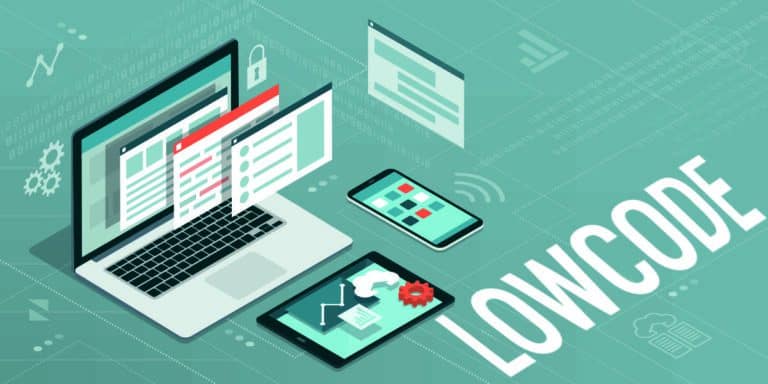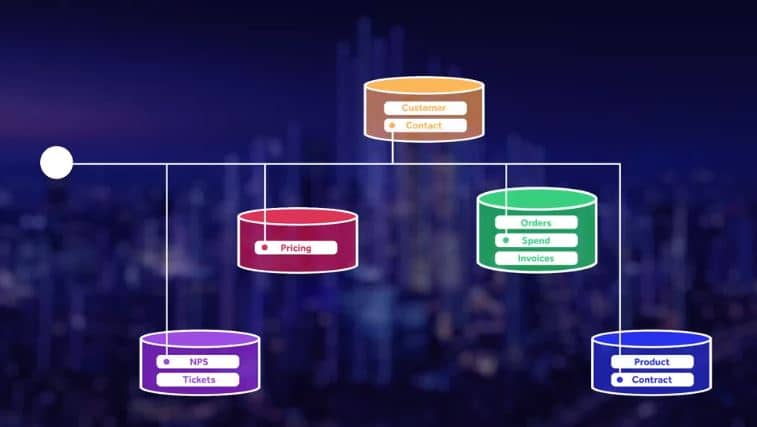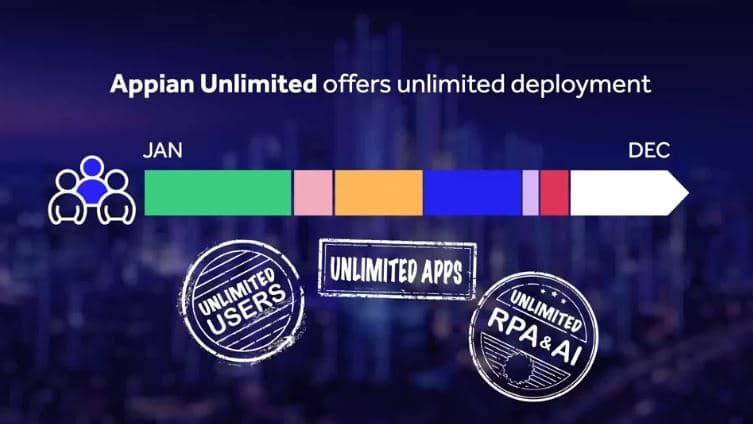Appian has been overtly profiling itself as a low-code player for several years now, even though it has a fundamentally different approach than many other low-code players we know. In addition to low-code, Appian’s platform also deals with things like RPA, BPM, AI and API integration. Traditionally, the company comes from the BPM corner, but in recent years it has become abundantly clear that low-code is the basis for everything Appian does. During Appian World, the company underlined this once again. Low-code is the future for Appian, but also for application development and software in general, is the message.
Low-code is the future, argues Appian CTO Michael Beckley during his keynote at Appian World, Appian’s annual event that was again held virtually this year. He says this in a section of his session in which he expresses his disbelief in no-code as the next step in low-code. According to him, with no-code you still always need high-code and so it is too restrictive. Low-code offers the best of both worlds, he concludes, because it has elements of no-code, while still allowing you to develop everything down to the pixel.
In light of the above statement, it is therefore not surprising that Appian is actually talking exclusively about the low-code capabilities of its platform. The name Low-code Automation Platform is also no coincidence. It indicates that low-code is at the root of everything the company does, as all the other components we talked about in the introduction fall within this platform. If you join forces with Appian, you will be working with low-code, that much is clear. Whether you only build applications, or also integrate things around RPA and AI, it doesn’t matter. The platform is the same.
Appian doesn’t offer the different modules à la carte either. You have the option to use them, but you can also link the platform to the solution you use for each of those components. For example, you can choose not to use Appian’s RPA capabilities, but connect the platform to UiPath. None of that matters much to Appian, is the message it wants to get out.
From slow to fast software
The flexibility of the Appian Low-code Automation Platform is part of the core of what Appian does. It’s part of how software should be today. In a conversation with Matt Calkins, the CEO of Appian, he says that software is no longer an expedient cost. More and more organizations are starting to recognize that, according to him. A consequence of this is that, according to him, software can no longer and should no longer be ‘slow’.
As an example of the problem of slow software, he makes an interesting comparison. According to him, mobile use of software at organizations increased by an average of 220 percent last year. This, of course, is the result of the impact of the corona virus on daily life. 220 percent seems pretty impressive. However, this is dwarfed by the nearly 2,000 percent increase that Appian itself noted. In other words, most software is still not usable or only barely usable on mobile. Appian’s applications were all immediately available for use in the new situation, in part because of the choice of React as the framework. Appian has been using that for a long time, to be able to build applications very quickly for the different platforms (browser, Windows, Android, iOS). A competitor like Pegasystems has only very recently made the switch.
If you accept that software should be flexible, you further quickly move away from software suites. Not that these couldn’t theoretically deliver fast software, but the chances of that happening are small, Calkins points out. So Appian will never force customers to buy everything from them. This also means that Appian’s platform is and always will be open. That this is not the easiest route for Appian, Calkins fully realizes that. But he believes it is the route that will benefit customers the most.
Accept and use data silos
For a long time, the business world was all about breaking down data silos. In itself this is a noble goal, but in practice it proves extremely difficult. That’s why more and more vendors and suppliers are throwing themselves onto tying all these silos together. You could say that it is becoming increasingly clear that the fight against silos cannot be won, so it is better to accept them. This is ultimately also a consequence of an open approach as advocated by Appian. Appian wants to be as open as possible, and thus integrate with as many other environments as possible. Those other environments often use their own data silos.
When developing applications, access to data is critical. Without the right input, you cannot build a useful application. However, data integration is also one of the trickiest parts. It requires the necessary skills to do this well, skills that not every organization has in abundance. In addition, databases are scattered everywhere. It does not make it easy to do a join between different databases. They are not optimized to work together, there is no key match and so on. That’s what low-code data is supposed to solve.
With low-code data, Appian brings low-code from the development side to data integration, so to speak. We’ve seen this before with Mendix, with the Data Hub. So from the latest version of the Appian Low-code Automation Platform, it is possible to integrate data using the same low-code concepts. You don’t have to migrate the data first.
During his presentation at Appian World, Calkins cited leaving the data in place as a differentiating factor. Competitors would move data around and appropriate it, so to speak. As far as we know, this is not entirely accurate. Mendix’s Data Hub, which we mentioned earlier, involves virtualized metadata and the actual data also stays where it was. We asked Appian to explain this a little further. Below is the full answer we received to our question, from which we can conclude that indeed no intermediate layer seems to be needed:
“With Appian you can choose to work with source data directly (depending on the source capabilities). So Appian is executing the integration at the moment it is needed. No need to migrate this data to the Appian database. Also the metadata (data structure) doesn’t need to be in Appian and we can construct a view which uses a flexible data model, although we can map the data as well towards an Appian Data Type to make it easier to use the data in Interfaces, Business Rules, Process Models, etc.“
So you end up having the choice of addressing the data directly, or doing it through an intermediate layer (Appian Synced Data).
Large-scale low-code
Whatever the exact ratios to the competition are in terms of low-code data integration, it is clear that Appian is scaling up low-code. This is also evident in the merging of low-code and Appian’s automation offerings (such as RPA and AI) into a single platform. This is not necessarily a new product, but more of an amalgamation of existing components. You don’t pay anything extra for the extra functionality you get this way, according to Calkins.
Merging these two components does raise a question as far as we are concerned. Appian always talks about best-of-breed, openness and accepting that organizations are already using other platforms and tooling. Is this then a first step towards still pulling customers into their ecosystem as much as possible?
We put this question to Malcolm Ross, VP of Product Strategy and Deputy CTO of Appian. According to him, we shouldn’t see it that way. The merging of low-code and automation into one platform is more of a concession to customers. Not everyone can or wants to use third-party AI and RPA functionality. In addition, he says that Appian’s RPA and AI components, among others, were developed in part based on customer requests. These include AI functionality specifically aimed at semi-structured data, for example.
In addition to the above expansion of the platform, there is something else new to report regarding its scaling. Calkins reports in his keynote that the company is coming out with an Unlimited license. This is what the name implies. No limits on numbers of users, applications to build, and no limits on AI or RPA bots.
Appian Low-code Portals
When it comes to scaling performance, the announcement of the beta of Low-code Portals is also not to be missed. Calkins describes this as the “front door” for applications that should be available to the general public. In other words, such a portal connects Appian applications to external users.
In itself, making applications available to external users is not new. It has been done for years, of course. So Ross calls it an evolution of the Appian platform in our conversation. Low-code Portals functionality now also makes it possible to bring such interfaces to modern microservices-based architectures. It’s effectively a ported interpretation engine, which allows you to quickly build portals for external users. The websites you end up offering can scale easily and quickly as a result. Of course, the Appian Portals are relatively accessible and easy to use, according to Appian, entirely in keeping with the low-code philosophy.
Community Edition
A final indication that things aren’t moving fast enough for Appian is the announcement of the Appian Community Edition. This allows you to use the full platform of Appian, without having to pay for it. You have everything at your disposal, including the newest and most advanced components. There is no limit to how long you can use it. That was the case with the standard trial so far.
Of course there are limits in other areas. That is only logical. But these are quite broad. Take the new low-code data component. There the limit is 25,000 rows per record. That means you can link 25,000 rows per connected source. With that, it should be possible to get a good picture of this functionality as well.
The Community Edition does not just offer the full platform, after which you have to figure it out yourself. There is also training, instructional videos, to help you get started. If you’ve created an application in the ‘test environment’, then there is also support to take it into production.
Momentum
Appian has not been idle since Appian Europe, over six months ago. Despite its relatively narrow focus on low-code, the company is increasingly picking up steam. As far as we are concerned, the two most important announcements this year are without a doubt low-code data and the Community Edition. With low-code data, Appian solves one of the main problems in building apps, integrating data. The Community Edition brings the platform as a whole to a wider audience. As an organization you can now do even more with low-code. This should also give low-code as a whole another push. The fact that Appian has removed some hurdles with Unlimited and by merging low-code and automation should also contribute to this.
If low-code is the future, then developments like this will also have to keep coming of course. Based on the pace at which Appian is innovating at the moment, we have no doubt that it will.


